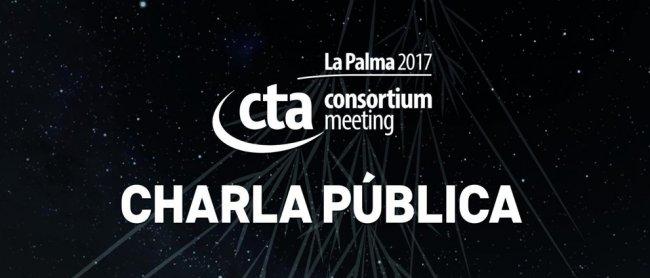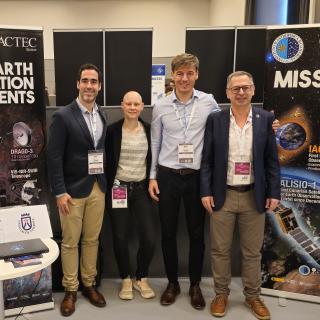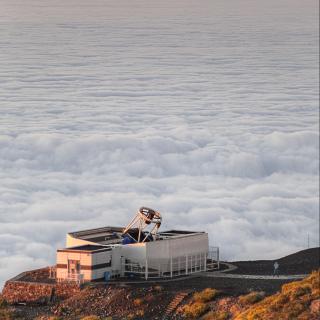"The insight we have of the Universe is broadening thanks to a new generation of techniques and instruments that allow us to observe processes that are difficult to access for Science", explains Carlos Delgado, researcher at CIEMAT (Center for Energy, Environmental and Technological Research) and protagonist of a public talk that will take place tomorrow, Wednesday, November 8h, at 7:30 p.m., at the Teatro Circo de Marte in Santa Cruz de La Palma.
As in the lecture held this afternoon in Garafía, entitled "Observing the Extreme Universe from La Palma", Delgado will talk about the strategic conditions in which the Roque de los Muchachos Observatory is located in Garafía (La Palma), to obtain new data on the most violent phenomena of the Universe.
The CTA Consortium, which meets this week in La Palma, is carrying out the construction of two world observatories: CTA Sur, in the Atacama Desert, in Chile; and CTA Norte, at the Roque de los Muchachos Observatory, in Garafía, La Palma. This last site is expected to host a total of 19 telescopes, of which 15 of them will have a diameter of 12 m (Medium Size Telesscopes, MST) and, the remaining four, 23 m (Large Size Telescopes, LST).
The Nobel Prize in Physics 2015, Takaaki Kajita, was commissioned to put, two years ago, the first stone of what will be the first of these LST telescopes. Kajita, who directs the Cosmic Ray Research Institute of Tokyo, will visit next week the Isla Bonita, where he will inaugurate a star named after him, the third of the Walk of Science’s Stars in the capital of the island.
The IAC's actions in the CTA project are financed by the project "The four Large Size Telescopes (LST) of the CTA-North in the ORM" reference ESFRI-2017-IAC-12 of the Ministry of Science, Innovation and Universities, 85% co-financed with European Regional Development funds (FEDER) of the Operational Programme for Intelligent Growth 2014-2020. This project is co-financed with Canary Islands Development Funds (FDCAN) from the Cabildo Insular de la Palma.
The Observatories of the Instituto de Astrofísica de Canarias (IAC) are part of the network of Singular Scientific and Technical Instructures (ICTS) of Spain.
Previous press releases:



